There is something magical about the classic styling of decked runabouts that ushers us back to an earlier, more elegant era. Obtaining a genuine classic isn’t going to be in the cards for everyone, but there is an alternative that blends their style with modern affordable construction and just the right amount of whimsy. The Runabout 14 (RB14) designed by Jacques Mertens-Goossens of Bateau.com is one such craft.
Jacques has been building and designing boats for most of his life. Schooled in Belgium in yacht design, he has created a considerable stable of boat designs. He was an early adopter of CAD, and Bateau.com quickly made the transition to CNC-cut kits so Jacques could spend more time designing boats while the team at the shop manages the business of cutting kits, supplying materials, and supporting backyard builders.
 Jim Dumser
Jim DumserKerfs in the aft ends of the side panels make the compound curves at the stern possible.
The RB14 would look right at home in a 1950s DIY magazine, and in fact that is exactly where Jacques found some of the inspiration for the design. At only 14′ long, the RB14 will never be mistaken for a restoration of a grand runabout that regularly wins awards at wooden boat shows, but it is no slouch in the looks department. The tumblehome stern, faux planked decks, and broad covering boards will turn heads at the ramp and get a thumbs-up from motorists on the highway.
My 13-year-old daughter Kyla and I built an RB14 boat for her since “boatbuilding with dad” has become a recent tradition in our family. She had some hands-on experience helping her older sister, Hannah, build a Jericho Bay Skiff, but when we needed a bit of help we found ample guidance in Bateau’s tutorials, active forum of knowledgeable builders, and the designer himself.
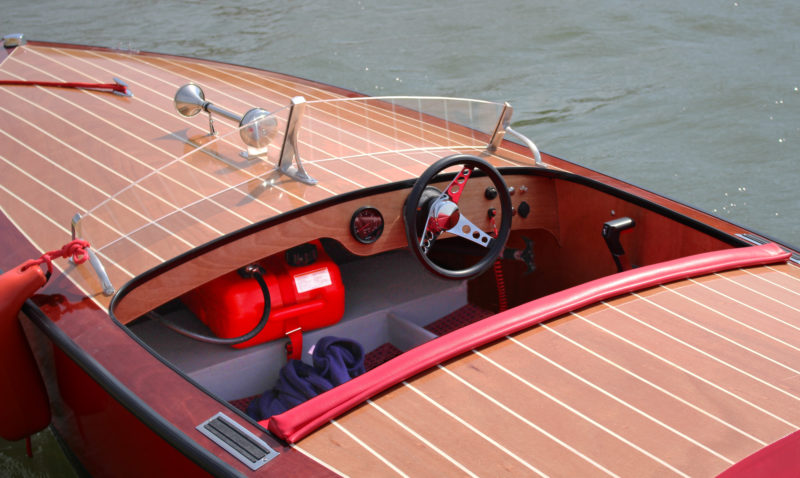 Jim Dumser
Jim DumserThe battery and fuel tank (visible here ahead of the foot well) are carried forward to help maintain good trim.
Plans are available, but we opted to order the hull kit. It includes temporary MDF molds and all of the permanent parts in BS 1088 okoume plywood. Each piece is CNC-cut with tabs to hold it in place on the plywood sheet; a little work with a thin, flexible pull saw frees them. Frames have tabs holding their centers which are left in place to give the frame rigidity during the early phase of construction. Long pieces for the side and bottom have puzzle-piece joints for quick and accurate alignment.
Construction is of stitch-and-glue plywood, assembled with the hull upside down. Permanent plywood stringers are incorporated into the molds, providing a rigid structure that exhibits little flex when the plywood panels that form the hull are bent around it.
The sides take on compound curves as they approach the transom—very difficult to achieve using 9mm-thick plywood—so the directions call for cutting parallel kerfs of varying lengths, in effect turning the aft half of the panel into six strakes. They get fastened to the curved edges of the transom and the kerfs are later filled; the facets created by the planks will be transformed into smooth curves in the course of sanding and applying ’glass and fairing compound. The sweet lines of the RB14 are proof that plywood can achieve the look that more traditional techniques provide. Builders working from plans are provided with the option of cutting the transom straight-sided and forgoing the kerfs in the hull sides.
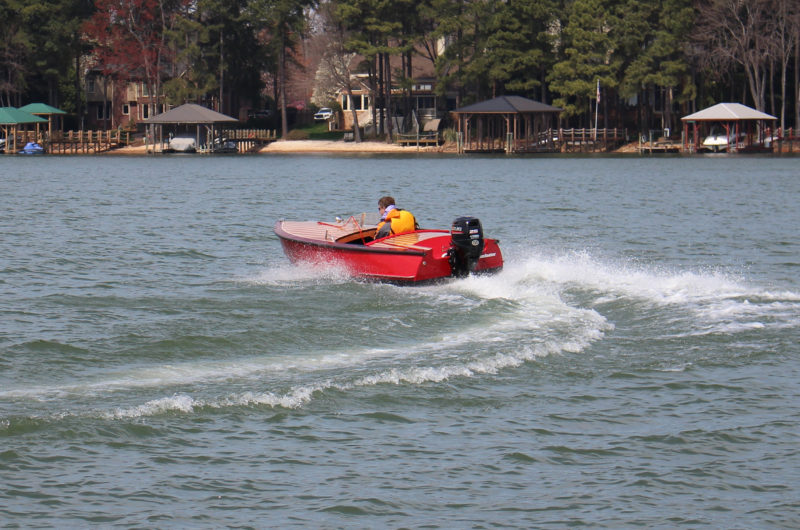 Kyla Dumser
Kyla DumserThe RB14 carves through turns without skidding. It’s very shallow-V hull is meant for smooth water.
The plans include options for a single or twin cockpit. The twin arrangement is asking a lot of so short a boat, and some might find it a bit restrictive. Builders of larger stature may want to opt for the single cockpit design as it offers more generous legroom.
The decks and cockpit offer the chance to show off woodworking skills and a bit of creativity since more of the decision making is left up to the builder. The kit includes all the parts necessary for the hull, and extra plywood is included for the decks; anticipating that builders will have different requirements for a comfortable fit in the cockpit and the layout of the deck, the plywood for the deck isn’t cut to shape. The plans offer renderings and suggested dimensions and then leave it to the builder to create a custom fit. Although a kit, this boat might be, as the RB14 web page notes, a bit of a reach for the first-time builder.
Decking can be planked traditionally over frames and caulked, or built with a variety of modern techniques. Some Bateau.com builders have vacuum-bagged strips of veneer over plywood on runabout decks. Others have cut plywood strips, then assembled them with colored epoxy filling the seams in lieu of caulk. Kyla chose to rout shallow parallel grooves in the 9mm mahogany plywood decking and fill them to achieve the look of classic runabouts. Regardless of the method, bright-finished wood decking, from either a traditional or a modern approach, is a fitting homage to the designs of a bygone era. It’s a lot more work than painting, but well worth the effort.
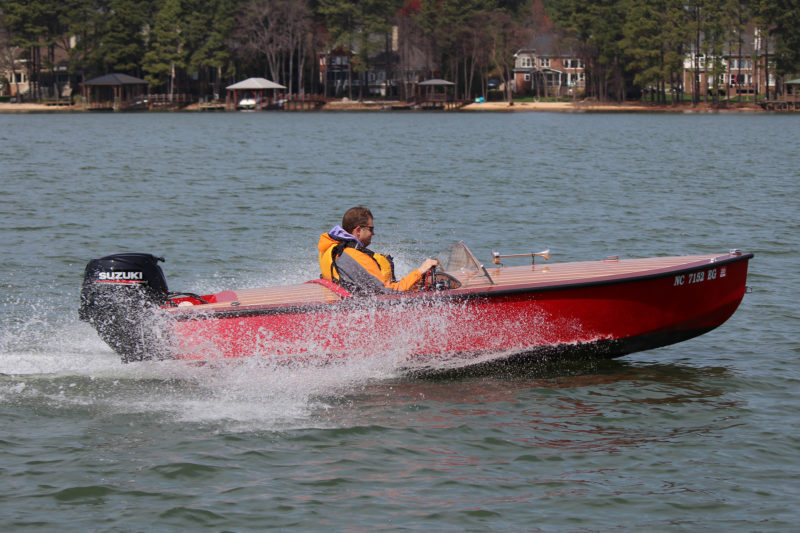 Kyla Dumser
Kyla DumserWith a 25-hp outboard providing power, the RB14 can reach a speed of 30 mph.
Safety is built into the boat with a fully draining motorwell. The standard transom, with a cut for an outboard with a 15″ shaft, keeps the weight down low and doesn’t compromise stability. The literature that comes with the kit includes instructions for adding the proper amount of foam to keep the boat afloat if it is swamped. The hull isn’t deep enough to have room for an elevated self-bailing sole like those found in most larger, modern designs these days, but a good bilge pump will keep her plenty dry at the dock, and her fully ’glassed hull is able to live on a trailer trouble-free while out of the water.
The distribution of weight in a small craft is always an issue to maximize performance, and the RB14 is no exception. The hull is largely left open below decks, so it is possible to fine-tune the trim after finishing and launching the boat. If you opt for an outboard on the larger side of the 10- to 35-hp spectrum, you might want to shift some weight forward to help bring the bow down. Placing the battery and fuel tank ahead of the cockpit helped ensure our First Mate sits on its correct waterline at rest and pops out of the hole quickly when climbing on plane. The dual cockpit design makes achieving proper trim more of a challenge, because passenger weight will play a considerably larger role.
We power the RB14 with a four-stroke 25-hp Suzuki outboard and with its light plywood construction, the boat gets on plane without sending the bow to the sky at the start and with nearly flat sections aft, it will plane easily while this modest-sized outboard sips fuel. With the motor at about 4,200 rpm the RB14 skims across the water very smoothly; cruising speed with two aboard is right at 20 mph. As the rpms climb, so too does the thrill with such a small boat. At 5,800 rpm, with two aboard, the speed is right up at 30 mph, and although not a white-knuckle ride, no one is left disappointed. The windscreen is appreciated and does improve the social aspect of an outing, allowing conversation without having to shout.
An external keel strip ensures that tracking is more than sufficient to put the pilot at ease; carving turns at speed is comfortable. Even at maximum rpms, the RB14 carves a smooth turn and hardly skids. On a plane, the boat is nice and dry with just a hint of spray when larger wakes are encountered. There is a nicely balanced feel to the handling, even at low speeds, making docking a pleasure. Bateau.com notes: “It’s an old-fashioned V hull that ends up with almost no deadrise: fast, but not designed for anything other than good weather.” We can confirm that the ride is a little bumpy at speed in a chop. No surprises here.
The Runabout 14 is a lightweight, trailer-friendly design that even a small car can pull. It offers strong performance in a small package, coupled with an aesthetic that warms the heart and harkens back to an earlier era when families made the time to go for sunset cruises and perhaps stopped off for a visit at a neighbor’s dock along the way. The RB14 appeals especially to those who enjoy the option to go fast, but are willing to slow down and enjoy life at a more genteel pace.
A word of warning: Don’t take the boat to a crowded launch ramp unless you have the time to answer a myriad of questions and receive a few pats on the back. Boats like the RB14 have a way of attracting attention of the best kind, usually from like-minded people, who just might want to be your new best friends.![]()
Jim Dumser is a husband, father, teacher, and boatbuilder who is lucky to have had the opportunity to share the art and love of boats with his daughters and his students for the past decade. Building boats is the natural extension of his time spent starting and teaching the Wood Arts program at North Carolina’s Community School of Davidson where students have built a number of craft from canoes to a St. Ayles Skiff.
Runabout 14 Particulars
[table]
Length/14′
Beam/4′9″
Hull weight/160 to 200 lbs
Displacement/730 lbs
Draft/5″
Power/10- to 35-hp outboard
Shaft length/15″ or 20″
[/table]

Runabout 14 plans and kits are available from Bateau.com for $75 and $2130 respectively.
Is there a boat you’d like to know more about? Have you built one that you think other Small Boats Monthly readers would enjoy? Please email us!
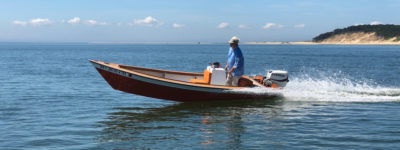
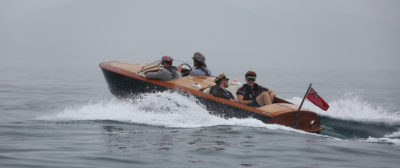
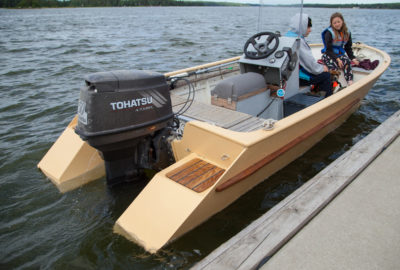

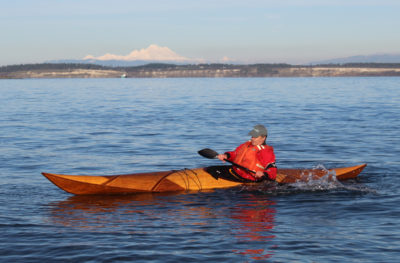

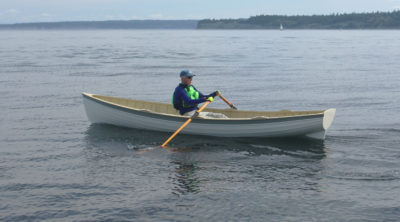
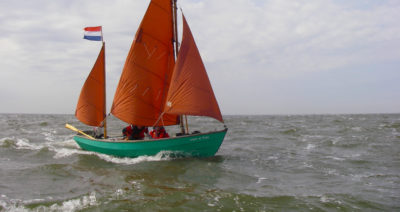
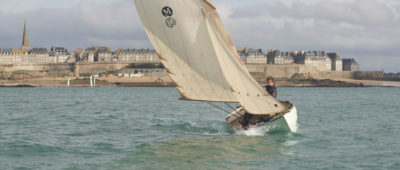
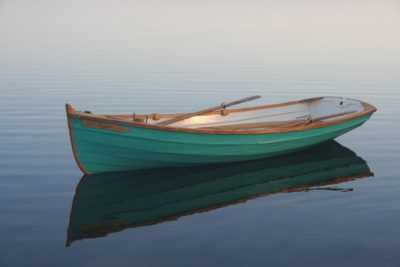
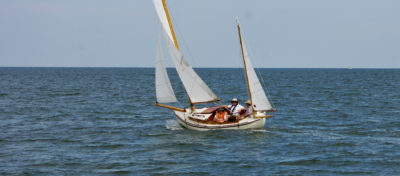
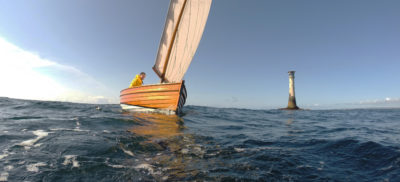
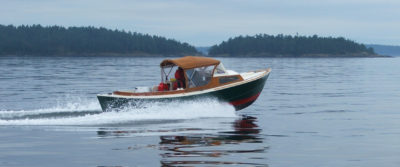

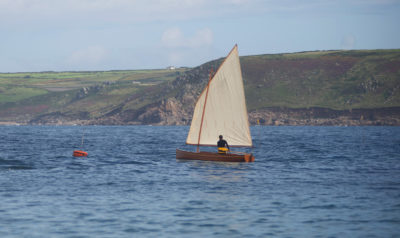
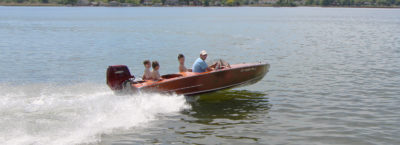
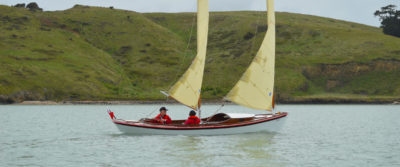
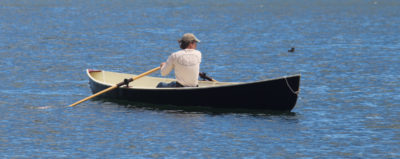
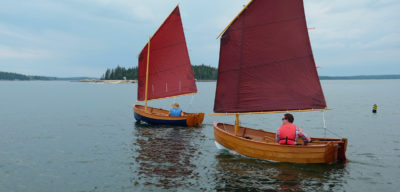
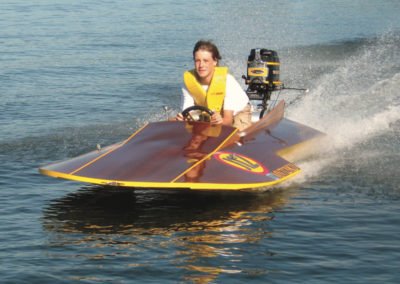

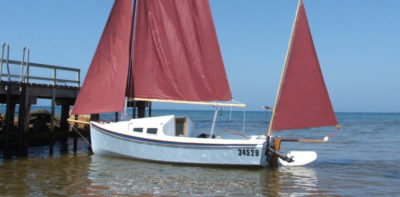
What a nice article and gorgeous boat!
I’ve been dreaming of building Bateau’s Runabout 16 stitch-and-glue kit for a couple years now. And I just received permission from the CFO (my lovely wife) to start building this spring.
I’m curious to know how much extra cost you had building the 14 regarding wiring, steering, wind screen, seats, etc. I know each will be different as taste and design will make many variables. But, an estimate from you would be nice to have for guidance on how much beer money I’ll have leftover!
Thanks,
Wayne